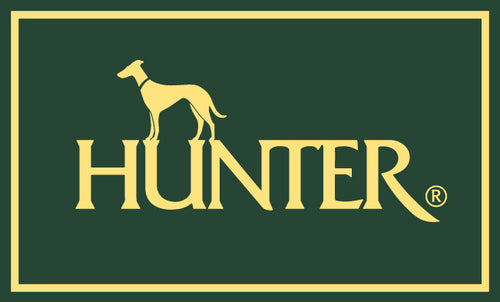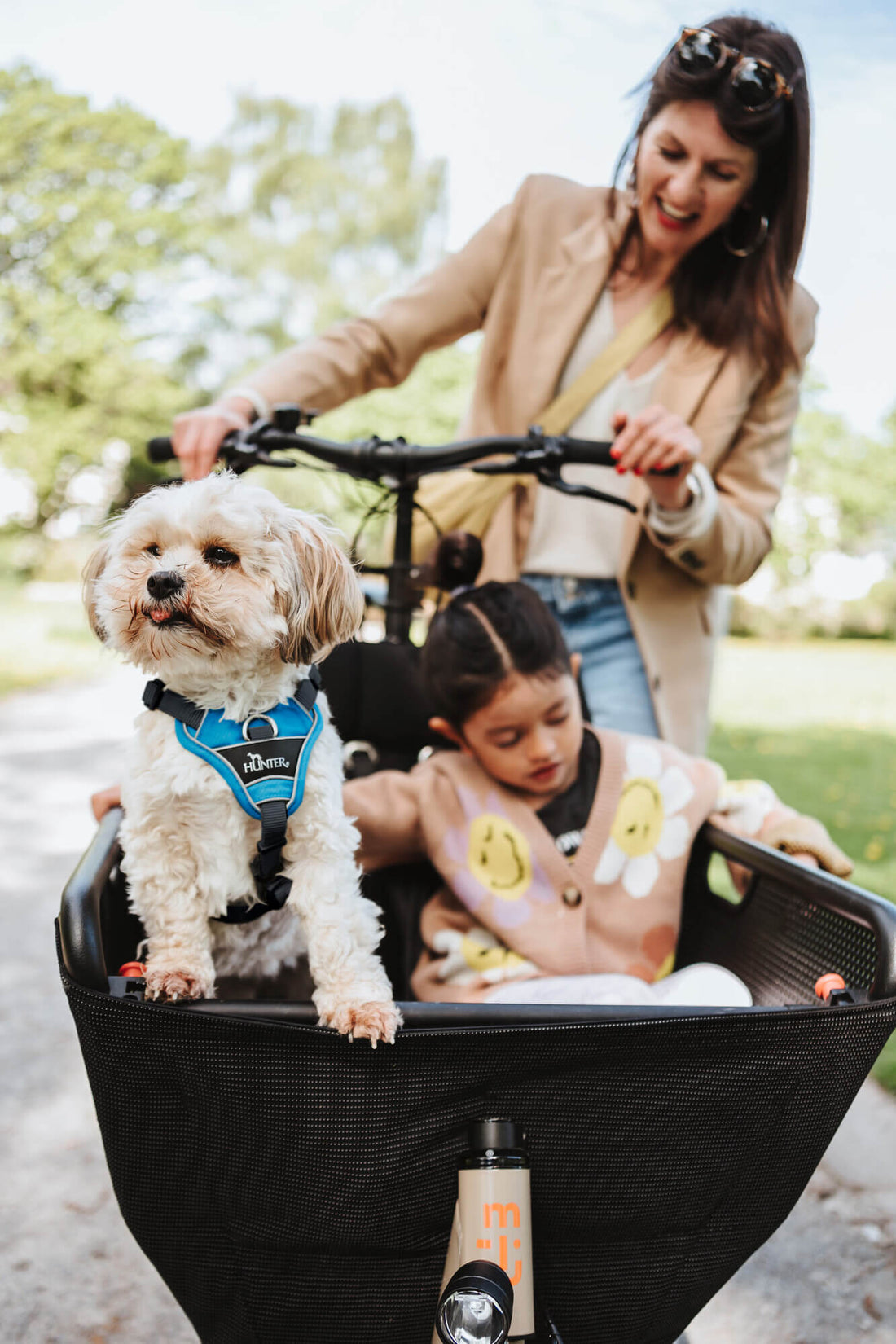As loyal companions and beloved family members, our dogs deserve nothing but the best, especially when it comes to their comfort and well-being. Choosing the right harness isn't just about aesthetic appeal; it's deeply rooted in understanding the unique anatomy of our dogs.
With a myriad of harnesses available in the market, how do we ensure our choice is the best for our canine friend? This article delves into the critical aspect of ergonomics, spotlighting its essential role in creating a harness that harmonises seamlessly with a dog's natural physique.
Dog Anatomy 101
Basic Skeletal Overview: At the heart of our canine companions is a robust skeletal structure, designed for agility, strength, and movement. While it might seem that all dogs have similar bone structures, nuances exist across breeds. The areas most impacted by harness use include the scapula (shoulder blades), the sternum (breastbone), and the spine. Understanding these elements is pivotal in selecting a harness that ensures both safety and comfort.
Muscle Distribution: Beyond the bones, a dog's muscular system plays a crucial role in their mobility and overall well-being. The primary muscle groups, like the trapezius (upper back), latissimus dorsi (mid to lower back), and deltoid (shoulder) muscles, bear the brunt when a harness is worn. A well-designed harness, such as the London Comfort Dog Harness or the Hilo Comfort Dog Harness, takes into account these muscle groups, ensuring that there's no undue pressure and that movement remains unrestricted.
Ergonomics: The Bridge Between Design and Anatomy
Definition of Ergonomics: At its core, ergonomics is the study of designing products, systems, or processes to take proper account of the interaction between them and the people that use them. In the realm of pet product design, it ensures that the accessory works in harmony with the natural anatomy and movements of the animal.
The Need for Ergonomics in Pet Products: Just as we demand comfort and functionality from our accessories, our pets deserve the same. An ergonomic design ensures that harnesses, like the Divo Nylon Neoprene Dog Harness or the Maldon Nylon Harness, don't just sit on a dog but complement their body structure. This not only enhances comfort but also ensures safety, reducing the risk of injury or strain. Harnesses lacking ergonomic consideration can restrict movement, cause chafing, and even lead to long-term health issues. As such, when we talk about pet products, especially harnesses, ergonomics isn't a luxury—it's a necessity.
The Importance of Proper Harness Positioning
Pressure Points: Just as humans can experience discomfort from ill-fitting shoes or tight belts, dogs too can suffer if a harness exerts undue pressure on specific areas. Common pressure points include the chest, behind the front legs, and along the sternum. Harnesses, like the London Comfort Dog Harness or the Aalborg Dog Harness, are crafted to distribute pressure evenly, ensuring that no single point bears excessive strain, thereby ensuring your dog's comfort.
The Spine and Harnesses: The spine is the central support structure of your dog's body. An incorrectly positioned harness can exert undue pressure on the vertebral column, potentially causing discomfort or even long-term health issues. A well-designed harness, like the Hilo Leather Dog Harness, respects the natural curvature of a dog's spine, ensuring that it supports without restricting movement.
Avoiding Respiratory Restrictions: A dog's harness shouldn't just be about control but also about ensuring they can breathe easily and freely. Harnesses that are too tight around the neck or chest can impact the respiratory system, making it hard for dogs to breathe, especially during strenuous activities. The Norwegian harness Ranger and the Divo Reflect Dog Harness, for example, are designed with a dog's respiratory needs in mind, providing support without impinging on their ability to take deep, unrestricted breaths.
Popular Harness Designs and Their Impact on Anatomy
Back-Clip Harnesses: Often a popular choice among many dog owners, back-clip harnesses have the leash attachment on the top of the dog's back. The Maldon Nylon Harness is a prime example of this design. The benefits include not tangling under the dog's front legs and offering easy control for the owner. However, from an anatomical standpoint, they might not be the best for dogs that pull vigorously, as they don't discourage this behaviour and can sometimes put strain on the front legs and neck.
Front-Clip Harnesses: The leash attachment is located on the chest with these harnesses. They offer more control over a dog's direction, often curbing pulling behaviours because they redirect the dog back towards the owner. Ergonomically, they allow for better weight distribution and reduce strain on the neck, especially important for breeds prone to respiratory issues. The Hilo Comfort Dog Harness represents this design, ensuring that a dog's movement is more natural and there's less strain on the trachea.
Dual-Clip Harnesses: A hybrid of the two aforementioned designs, dual-clip harnesses, like the Vario Rapid Dog Harness or the London Vario Rapid Dog Harness, offer the versatility of both front and back clipping. This means owners can decide based on the activity or the training session. Ergonomically speaking, they combine the benefits of both harness types. They can prevent pulling while also ensuring the dog's natural motion isn't restricted, giving the owner the flexibility to choose the attachment point that best aligns with their dog's needs.
Red Flags: Signs Your Dog’s Harness Isn’t Ergonomically Sound
Visual Checks: One of the first and most apparent signs that your dog's harness might not be the perfect fit is uneven wear on the harness itself. This suggests that there's uneven pressure being applied to your dog, which can be detrimental in the long run. Moreover, signs like fur loss, especially around the harness area, or visible skin irritations, such as redness or chafing, are clear indicators that the harness might not be suitable for your pet's anatomy. For instance, a harness like the Neoprene Dog Harness has a padded design to reduce such wear and tear on your pet's body.
Behavioural Cues: Our dogs might not speak our language, but their behaviour can tell us a lot. If your once eager walker is now hesitant to move or appears uncomfortable, it's a sign to reassess the harness. Additionally, changes in gait, like limping, or frequent stopping to scratch or bite at the harness area, are strong indicators that something is amiss. Sometimes, a simple adjustment is all that's needed, but in other cases, a different design or size might be more appropriate.
Long-Term Health Concerns: Just as wearing ill-fitting shoes can have long-term implications on our posture and musculoskeletal health, a poorly fitted or designed harness can similarly affect our dogs. Over time, consistent pressure on the wrong areas can lead to musculoskeletal problems. Dogs might develop issues ranging from minor muscle strains to more severe conditions like intervertebral disc disease. Hence, opting for ergonomically designed harnesses like the Aalborg Dog Harness, which takes into consideration the natural anatomy of dogs, can ensure that your canine companion remains in prime health.
Tips for Choosing an Ergonomically Designed Harness
Fitting Guides: Just as you wouldn't wear shoes that are too tight or too large, the same principle applies to your dog's harness. An improper fit can cause a plethora of issues ranging from skin irritations to musculoskeletal problems. When considering harnesses like the London Vario Rapid Dog Harness or the Hilo Comfort Dog Harness, it's essential to consult the brand's sizing guides and, if possible, have fitting sessions. Ensure the harness is snug but not restrictive, allowing you to fit two fingers comfortably between the harness and your dog.
Material Considerations: The makeup of the harness plays a significant role in its ergonomics. Materials need to be flexible enough to accommodate a dog's varied movements while being robust enough to ensure safety. For instance, the Divo Nylon Neoprene Dog Harness uses a combination of durable nylon and soft neoprene to provide both strength and comfort. Breathability is also crucial, especially for dogs that are active or live in warmer climates. Harnesses that allow for airflow can prevent overheating and reduce the chance of skin irritations.
Test Runs: Once you've selected a potential harness, it's advisable to observe its performance in real-world scenarios. Take your dog on short walks or play sessions while they wear the new harness. Notice their movement: Are they walking differently? Do they seem more comfortable or less so? These trial runs can provide invaluable insights, ensuring that when you commit to a harness like the Norwegian harness Ranger or the Round & Soft Luxus Elk Petit Harness, it's with the confidence that it's the perfect ergonomic choice for your dog.
Conclusion
Recap: In the realm of canine accessories, harnesses are not just about control and style. As we've journeyed through the intricacies of dog anatomy and the science of ergonomics, it's clear that the marriage of these two domains results in designs that respect and support our dogs. Whether it's understanding the skeletal nuances, recognising pressure points, or appreciating the blend of materials in products like the Hilo Leather Dog Harness or the Neoprene Dog Harness, it all circles back to the well-being of our four-legged friends.
Encouragement: Our pets grace our lives with unconditional love and loyalty. In return, it becomes our privilege and duty to ensure their comfort and safety. As you stand at the crossroads of choosing the perfect harness, let the knowledge of ergonomics guide your decision. Choose wisely, choose with heart, and let every walk be a testament to your dog's comfort and your informed choice. Always remember, a happy dog means a happier you.

